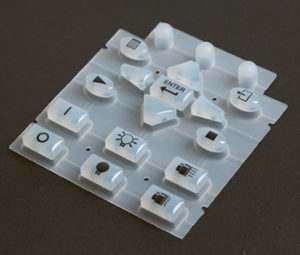
Keypads play an important role in the function of many devices and machines. They are interfaces that allow users to control the devices and machines in which they are installed. All keypads feature an array of keys. Pressing these keys will send an electrical signal to the device or machine. While they all serve the same purpose of providing an interface for devices and machines, however, not all keypads are the same. Here are some dogs and don’ts to follow when choosing a keypad.
Do Consider the Material
You should consider the material when choosing a keypad. Some of them are made of rubber or plastic, whereas others feature stainless steel keycaps. Silicone rubber keypads, of course, are characterized by the use of silicone rubber. They feature silicone rubber webbing. When you press a key, the silicone rubber webbing will deform. When you release your finger from the key, the silicone rubber webbing will revert back to its original shape.
Do Match With Intended Application
Different keypads are used for different applications. When choosing a keypad, you should make sure it’s aligned with the application or applications for which you intend to use it. Maybe you’re planning to use the keypad as a machine interface in your business’s workplace, or perhaps you’re planning to use it for data entry or security access. Regardless, you should choose a keypad that matches the intended application.
Do Choose the Right Circuit Type
Make sure you choose a keypad with the right type of circuit. Some keypads use a rigid printed circuit board, whereas others use a flexible printed circuit board. You can even find keypads with a screen-printed circuit layer.
Don’t Overlook Backlighting
Keypads support backlighting. While backlighting may seem like an aesthetic feature, it can enhance the performance and usability of keypads. If you’re planning to use it in a low-light environment, you may want to choose a keypad with backlighting. There are different backlighting technologies — light-emitting diode (LED), light guides, fiber optic, etc. — but they all work by producing light. The light will shine through the top layer of the keypad, resulting in improved visibility in low-light environments.
Don’t Choose a Keypad With Too Much Tactile Feedback
Don’t make the mistake of choosing a keypad with too much tactile feedback. Tactile feedback is a sensational response to a keypress. Most keypads generate tactile feedback naturally as a result of their webbing material. While it can reduce errors, though, too much tactile feedback may backfire. The more tactile feedback a keypad generates, the more force you’ll have to apply when pressing the keys.
